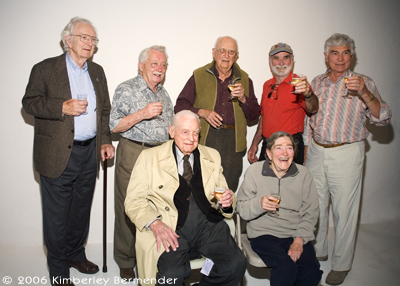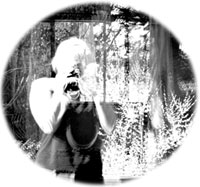Photographs are all about light. So many photographs are taken during daylight, that by default a night image has an air of mystery to it. In this assignment, create several distinct image styles at night.
Here's what you'll need for your nighttime photo shoot:
- Camera with ability to take long exposures
- A tripod
- A quick release cable (optional, but really helps with camera shake)
- A location with some light
- A flashlight deer light or other light source (optional, but a lot of fun)
1. Find a location with some available light (moonlight, streelights) or just after sunset.
2. Set up your tripod and quick release cable.
3. Meter? Forget about it! Night photography metering consists of your eye and experience. Play with shutter speeds. I'll often start at a few seconds, then work my way up to a minute + (you'll soon learn the law of reciprocity failure*). One of the great advantages of the digital camera is the ability to change ISO on the fly. Play with longer shutter speeds, increase ISO and see the results (clue: high ISO will give a grainier 'feel' to the image. Can you make this work as a compositional tool?).
4. Photography literally means 'writing with light'. Why not take that literally? With your camera on the tripod pointing at a fairly dark area with some discernable objects in in, set your shutter speed to a minute (this will vary, depending on the ambient light in the area, and how close you are to the objects). Release your shutter, and take a flashlight or deer light and start painting around objects. Notice that you can paint foreground, middle and background areas, just depending how much time you have with the shutter. Also, you can work yourself into the image as well.
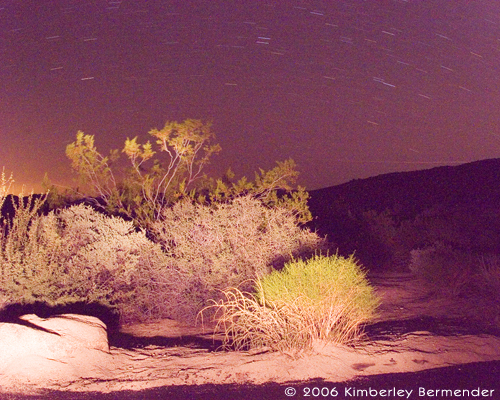 Long exposure Joshua Tree landscape painted with flashlight. Notice the light streaks from the stars and the graininess of the image. 303 seconds, f/11, ISO 800
Long exposure Joshua Tree landscape painted with flashlight. Notice the light streaks from the stars and the graininess of the image. 303 seconds, f/11, ISO 800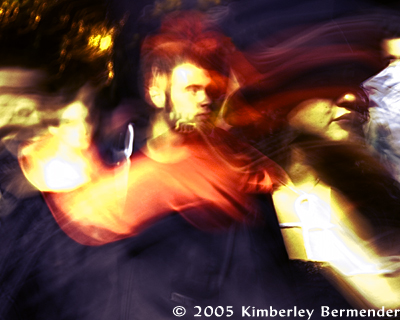 Hand held Halloween night, downtown Santa Cruz, people moving. 60 seconds, f/6.7, ISO 400
Hand held Halloween night, downtown Santa Cruz, people moving. 60 seconds, f/6.7, ISO 400 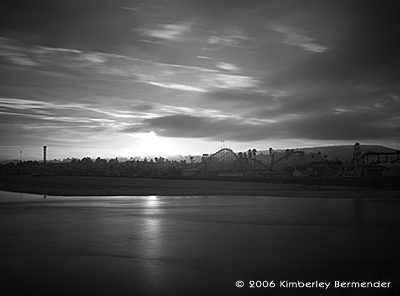 Tricky, this has an infrared filter on it, Santa Cruz beach boardwalk. 60 seconds, f/16, ISO 400
Tricky, this has an infrared filter on it, Santa Cruz beach boardwalk. 60 seconds, f/16, ISO 400 Copyright 2006 Kimberley Bermender
Maginei
Reciprocity Failure Definition (Wikipedia)Reciprocity refers to the inverse relationship between the intensity and duration of light that determines exposure of light-sensitive material. Within a normal exposure range for film stock, for example, the reciprocity law states that exposure = intensity × time. Therefore, the same exposure can result from reducing duration and increasing light intensity, and vice versa.
Outside of the normal range, the reciprocity law does not describe the actual behavior of light-sensitive material. This is known as reciprocity failure. At very low light levels, for example, the corresponding increase in duration required to produce an exposure can be higher than the formula states. That is, at 1/2 of the light required for a normal exposure, the duration may have to be more than doubled to expose the media.
